Yesterday was Delhi at its most full on. A mix of the contemporary and the historic, a kaleidoscope of sights, smells, experiences, tastes and emotions. (There’s less of the boys in this post, so some of you may want to skip it.)
We began (following Sonny’s encounter with street children in Agra) with a mad race across town to visit the Salaam Baalak Trust who work with street children. Our progress was impeded by the impending arrival of the Indian Prime Minister at New Delhi station, which meant half the station was off limits. This was unfortunate as we had to get across the station to the start of our tour. I can’t deny that tempers became a little short.
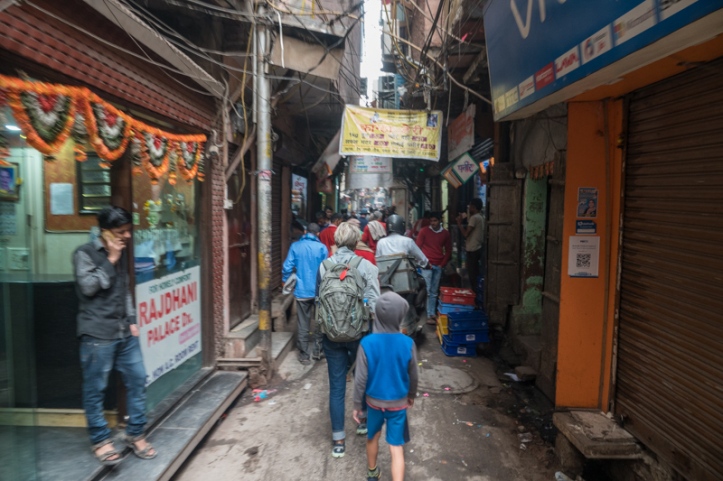
However, we made it, and went on a two hour tour, led by two former street children, S and G. In-between stopping off at various points in a run down area frequented by street children, they told us about the lives of street children, and their own harrowing stories.
Many kids are escaping abusive, alcoholic or poverty stricken families. Sometimes they are seduced by the prospect of the city as a beacon of hope and opportunity. It doesn’t turn out like that of course. They fall into drugs (glue sniffing mainly) to numb the pain. They do odd jobs if they can (shoe shining, car cleaning) and make perhaps 100R a day (£1). But they have to spend it immediately because if they fall asleep with money in their pockets then it will invariably be stolen. They sleep rough, and have no more possessions than they can carry.
For the girls it is even worse. Many are rejected by their family because in a still deeply patriarchal society they are seen as a burden. When a girl gets married her family have to pay a dowry to the groom’s family. If they’re poor this is beyond their means, and girls are sometimes just abandoned. If they turn up in Delhi they will usually end up caught in a prostitution trap. A pimp will promise them the earth, then get them working. They can have sex up to 20 times a day, for which they will earn perhaps 2000 rupees. But the money all goes to the pimp, who loans it back to them, so they can never escape the cycle of indebtedness. Violence is of course common.
The Salaam Baalak trust is a beacon of hope in this incredibly depressing situation. They have a series of shelters for homeless kids, and also “contact points” in known places where street children congregate, like the station. Everyone at the station knows to send children on to the Trust. Once brought into the Trust’s orbit they are helped into eduction, if it’s appropriate they’re reunited with their families, they’re given counselling and so on.
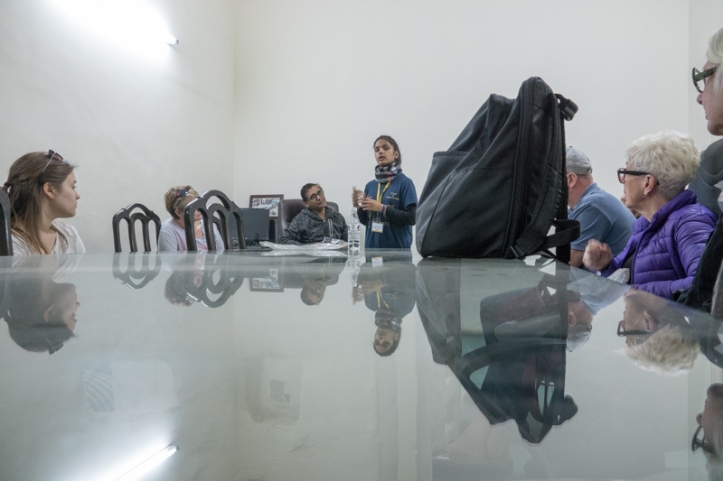

G told us his personal story. His life began with an alcoholic father and absent mother. His elder brother ran away from home when he was around 5. When he was 6 his mother took him to a place near a station and left him there, saying she’d be back. She never returned. He burst into tears and was found by some people who took him to some kind of orphanage. It turned out to be hell on earth. He was beaten and broken. This went on until he was 10. Then he found his way to the Salaam Baalak Trust. That first night was the happiest of his life – for the first time he felt secure. Since then he’s gone from strength to strength. He’s now a dancer, aged 17, and full of hope for the future.
After that sobering encounter, we headed over to the Red Fort.
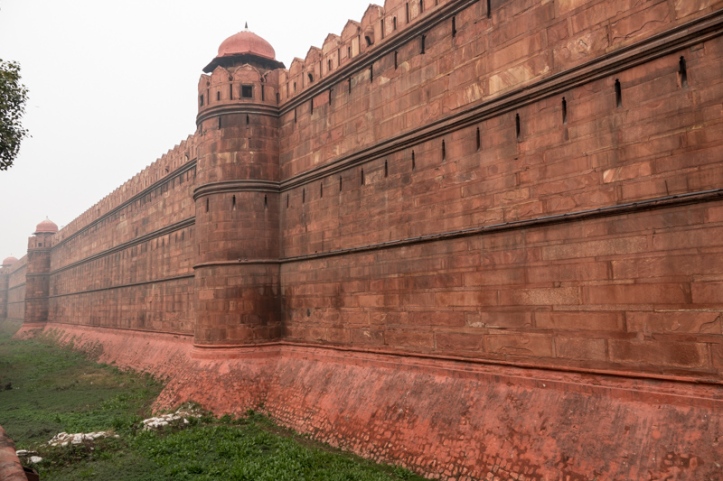
Outwardly similar to Agra Fort, but more significant: a place that weaves together Indian history over the last 400 years like no other. It was built by our old friend Shah Jahan (he of the Taj Mahal), who moved the capital of the Mughul Empire from Agra to Delhi in 1639, and made the Red Fort the centre of his opulent Imperial Court – the high point of Mughul rule.
And what opulence it was. Home to the legendary Peacock Throne – a throne of such incredible extravagance that it was said to have cost twice the construction of the Taj Mahal. (It was eventually looted by the Persians and broken up, although the Koh-i-nor diamond, which was part of the throne, found its way into the British Royal Family’s Crown Jewels.)
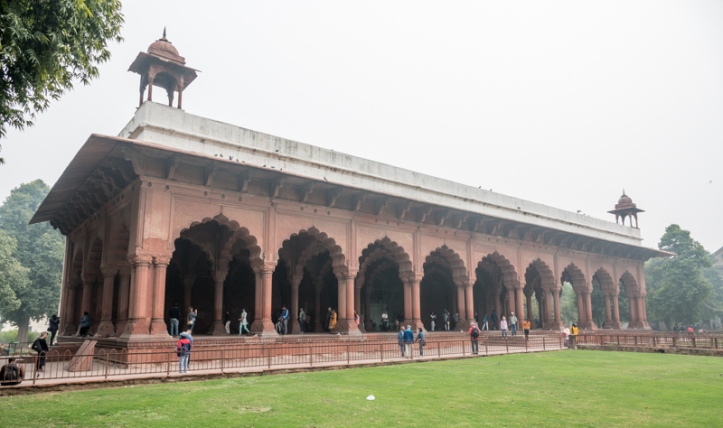
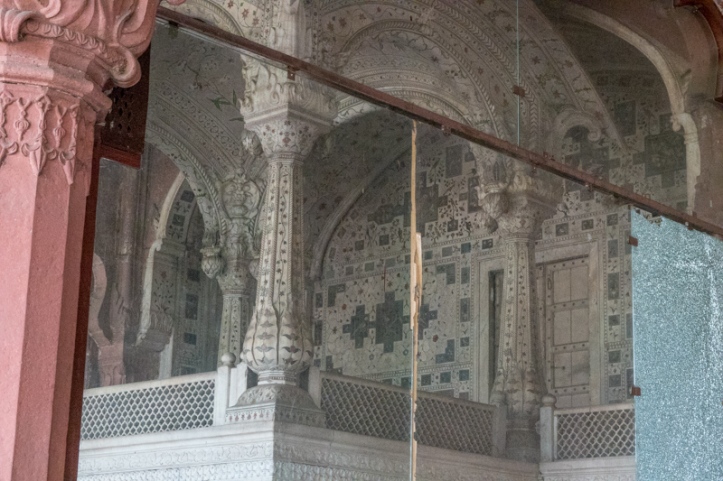
Even today, after the ravages of time and vandalism, I marvel at the sophistication and artistic brilliance of the Mughul Court. Surely a match for anything in Europe at this time.


The use of water – both for decorative purposes and to keep buildings cool – was a feature of Mughul architecture. In one building a sheet of water tumbled down a wall, with alcoves behind that held candles.
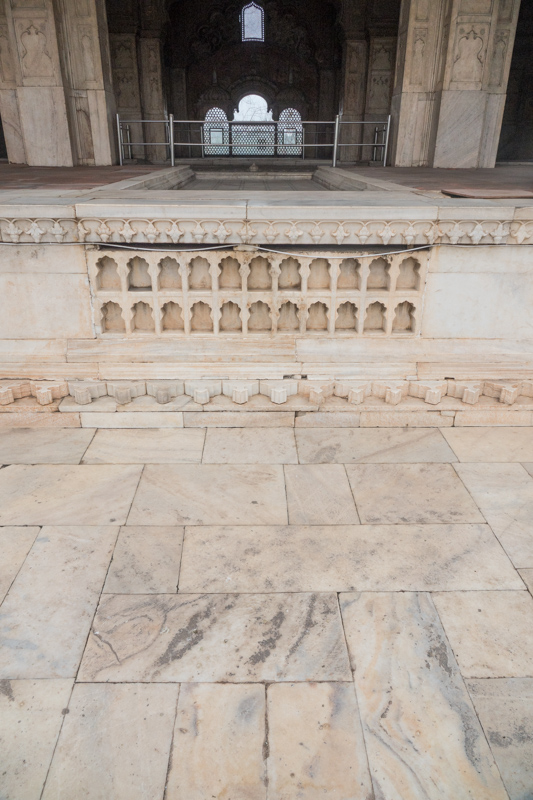
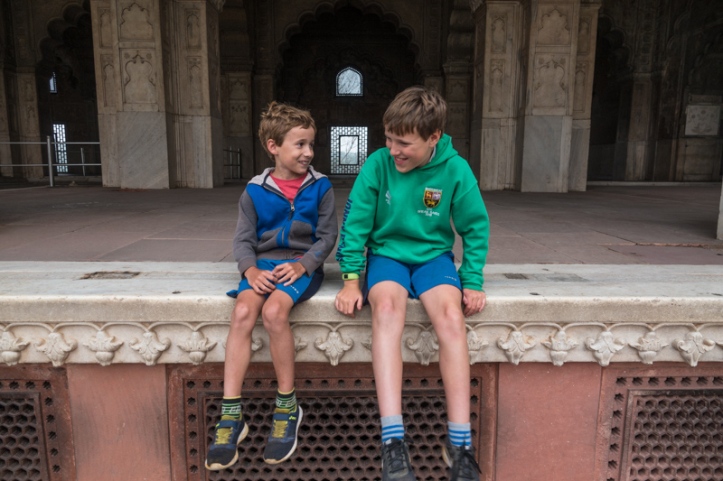
Mughul rule finally came to an end in the middle of the 19th century, after many years of decline. In 1857 after the failed Indian Mutiny against the British, the last Mughul Emperor fled from the Red Fort.
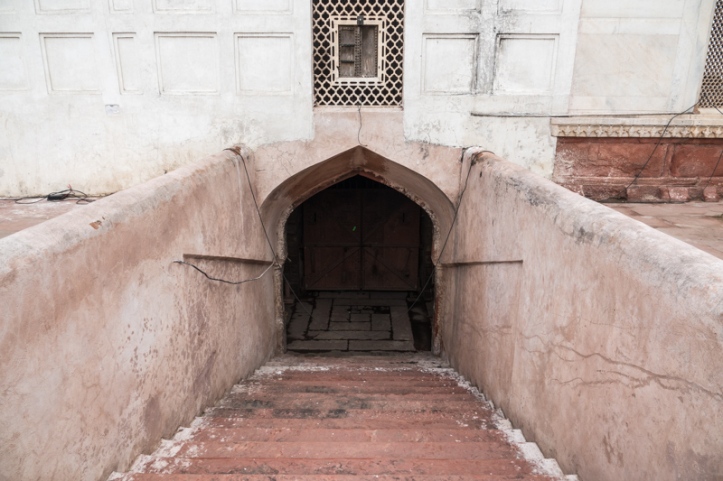
The British then chose this hugely symbolic centre of Moghul power for the subsequent announcement that they were annexing India into the British Empire. They recaptured the last Moghul Emperor and put him on trial inside the Fort. Soldiers ransacked the palaces, stole the silver from the roofs and blackened the walls with fire. Many of the buildings were demolished and replaced with utilitarian army barracks.
It was a humiliation, but eventually the tables would be turned. 90 years later, India’s first Prime Minister, Pandit Nehru, stood on the ramparts of the Red Fort on India’s day of independence from Britain and addressed a huge crowd. India had reclaimed the Red Fort. (Nehru’s famous speech on the eve of independence is poetic and stirring: “Long years ago we made a tryst with destiny, and now the time comes when we shall redeem our pledge… At the stroke of the midnight hour, when the world sleeps, India will awake to life and freedom…”)
But what of India away from the power politics? What of the ordinary people – from Mughal times through Empire to the present day? As Kate frequently reminds me, all this talk of the Mughul Empire doesn’t sit easily with my supposedly radical perspective. Outside the Red Fort a street called Chandni Chowk heads in a straight line. On either side is one of the craziest bazaars in the world – a teaming labyrinth of cramped alleyways, decaying buildings, tangled electric cables, market stalls and fast food joints.

If there is one place that unites the experience of people through the ages, it is surely here.

Today scooters jostle with pedestrians and bicycle rickshaws, and there are electric lights, but in many other ways this market is as it has been since the time of the Mughals.
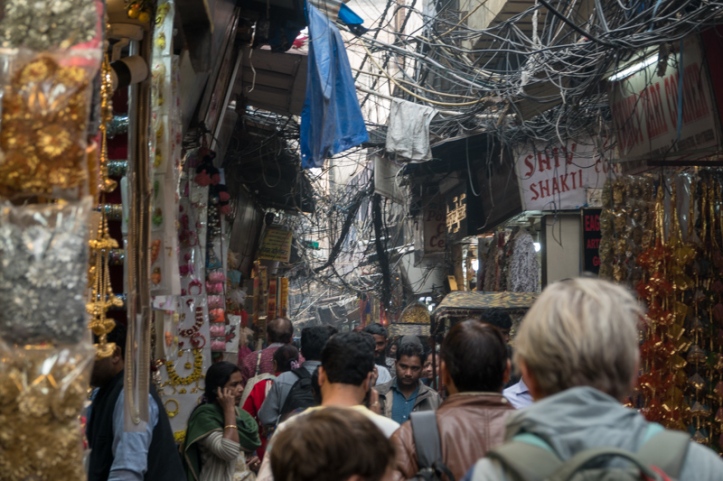
Indeed, it was none other than Shah Jahan – with his daughter – who laid out Chandni Chowk. Originally a canal ran down the centre of the road: today there are roadworks as new sewers are installed.

In an act of sacrilege – given that this is one of the fast food capitals of the world – the boys ate at MacDonalds. But we then moved on to sample some of the delights on offer. Some of the most famous food is available in totally nondescript street corner stalls. Take the Old Famous Jalebi Wala. Unless you’d read about it, you’d never know this is one of the most celebrated food stops in the market. Jalebis are basically a kind of pancake mix, squeezed out of a muslin bag,
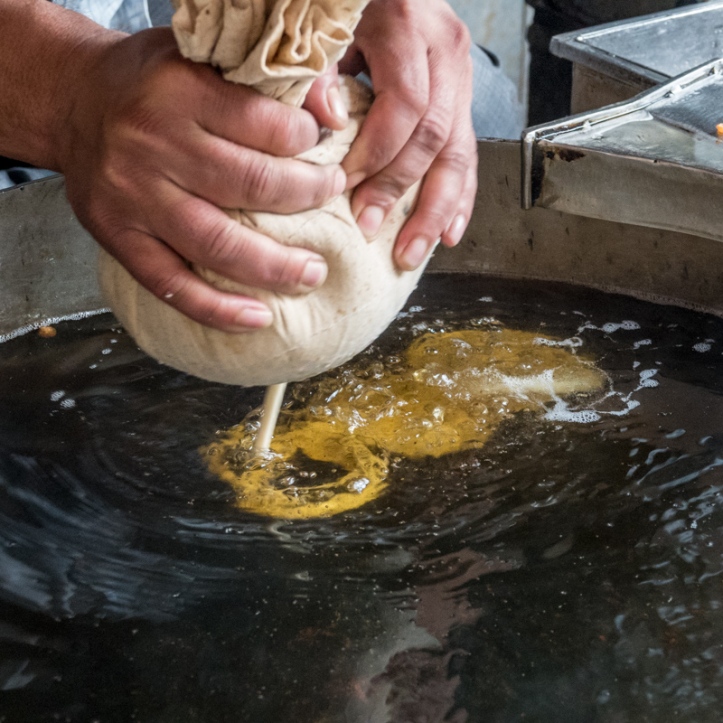
fried as deeply as it is possible to be fried, then dipped in the sweetest hot syrup imaginable,
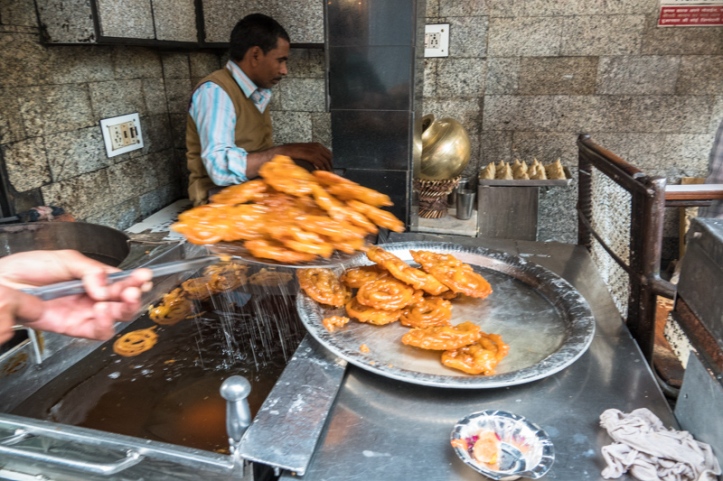
and finally served in newspaper. Utterly delicious.
There are some extraordinary sights that you just stumble upon without warning. Here is a particularly chaotic and jumbled up market scene.
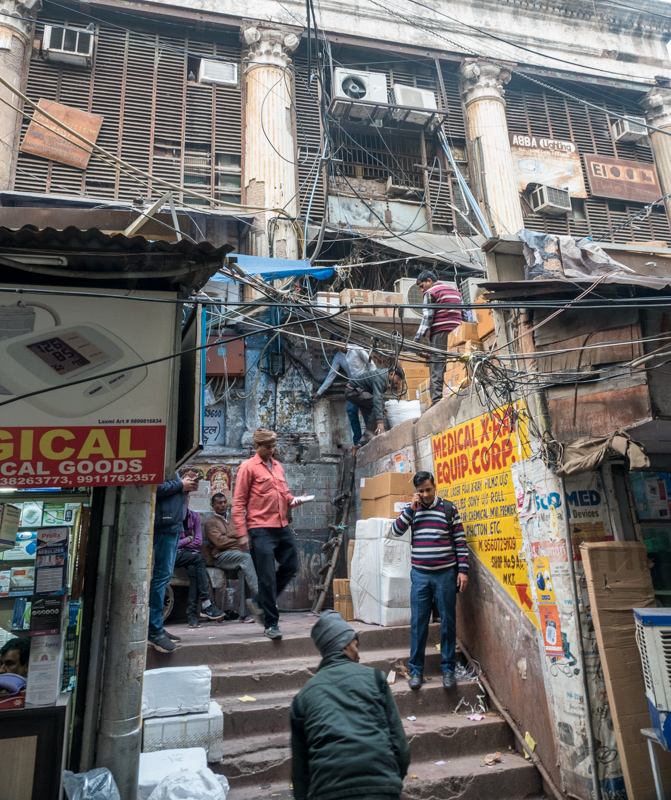
But the columns look interesting don’t they? So you look a little higher. And you see this:
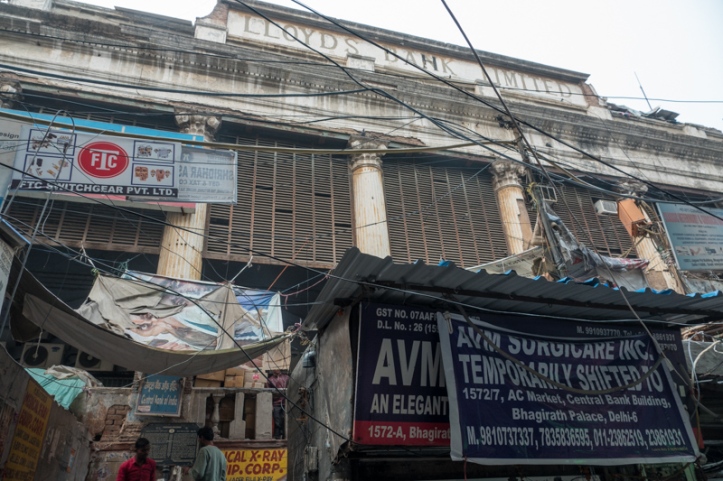
A magnificent ruin – the old Lloyds Bank building. Which in turn it transpires was once a palace.
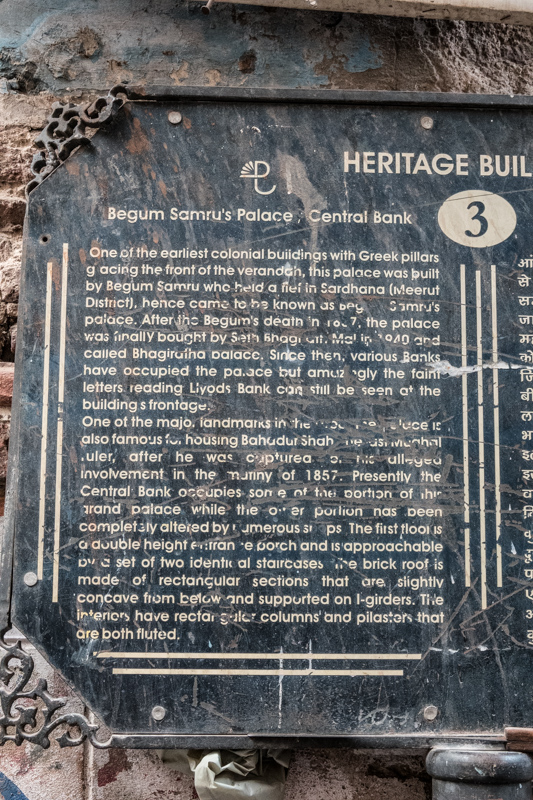
And then night draws in, and it becomes even more atmospheric and colourful.

And crazier.
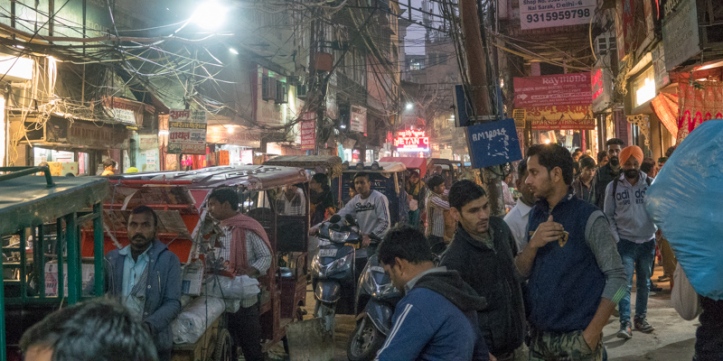
And what of the future of this unique place? Plans are of course afoot to gentrify – a horrifying possibility.
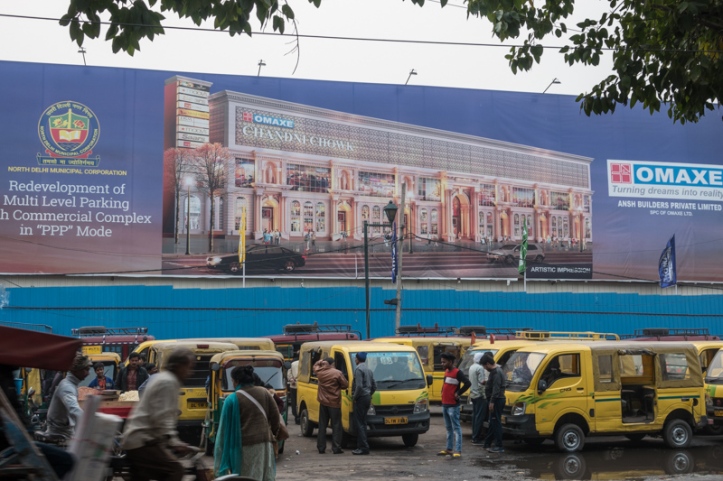
Grimy, overcrowded, noisy – but vibrant and alive in a way I’ve experienced in very few places. I hope Chandni Chowk doesn’t change too much.
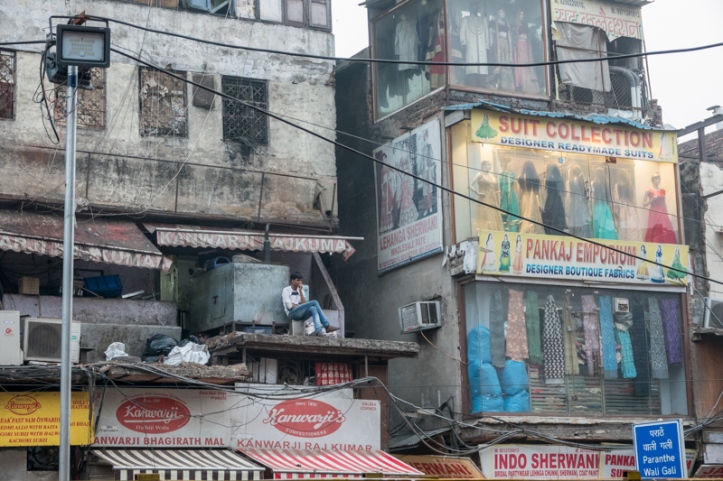
This is pretty sobering …
LikeLike
[…] to give the sense that our time in Delhi was coming full circle, Humayan’s Tomb is where the last Mughal emperor fled after the failure of the 1857 Mutiny against the British. He was captured here and taken back to […]
LikeLike
[…] It was set up as a business to help orphans and street kids, so a nice link with our Tanzanian and Indian […]
LikeLike